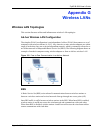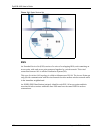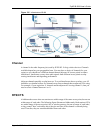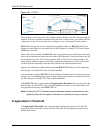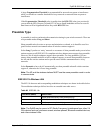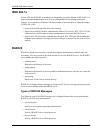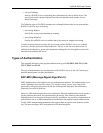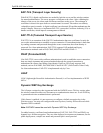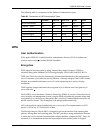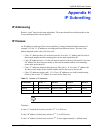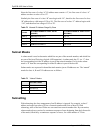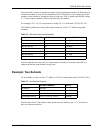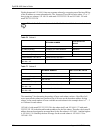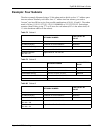
ZyAIR B-3000 User’s Guide
Appendix G Wireless LANs 196
The following table is a comparison of the features of authentication types.
Table 69 Comparison of EAP Authentication Types
EAP-MD5 EAP-TLS EAP-TTLS PEAP LEAP
Mutual Authentication No Yes Yes Yes Yes
Certificate – Client No Yes Optional Optional No
Certificate – Server No Yes Yes Yes No
Dynamic Key Exchange No Yes Yes Yes Yes
Credential Integrity None Strong Strong Strong Moderate
Deployment Difficulty Easy Hard Moderate Moderate Moderate
Client Identity Protection No No Yes Yes No
WPA
User Authentication
WPA applies IEEE 802.1x and Extensible Authentication Protocol (EAP) to authenticate
wireless stations using
an external RADIUS database.
Encryption
WPA improves data encryption by using Temporal Key Integrity Protocol (TKIP) or
Advanced Encryption Standard (AES), Message Integrity Check (MIC) and IEEE 802.1x.
TKIP uses 128-bit keys that are dynamically generated and distributed by the authentication
server. It includes a per-packet key mixing function, a Message Integrity Check (MIC) named
Michael, an extended initialization vector (IV) with sequencing rules, and a re-keying
mechanism.
TKIP regularly changes and rotates the encryption keys so that the same encryption key is
never used twice.
The RADIUS server distributes a Pairwise Master Key (PMK) key to the AP that then sets up
a key hierarchy and management system, using the PMK to dynamically generate unique data
encryption keys to encrypt every data packet that is wirelessly communicated between the AP
and the wireless stations. This all happens in the background automatically.
AES (Advanced Encryption Standard) also uses a secret key. This implementation of AES
applies a 128-bit key to 128-bit blocks of data.
The Message Integrity Check (MIC) is designed to prevent an attacker from capturing data
packets, altering them and resending them. The MIC provides a strong mathematical function
in which the receiver and the transmitter each compute and then compare the MIC. If they do
not match, it is assumed that the data has been tampered with and the packet is dropped.



